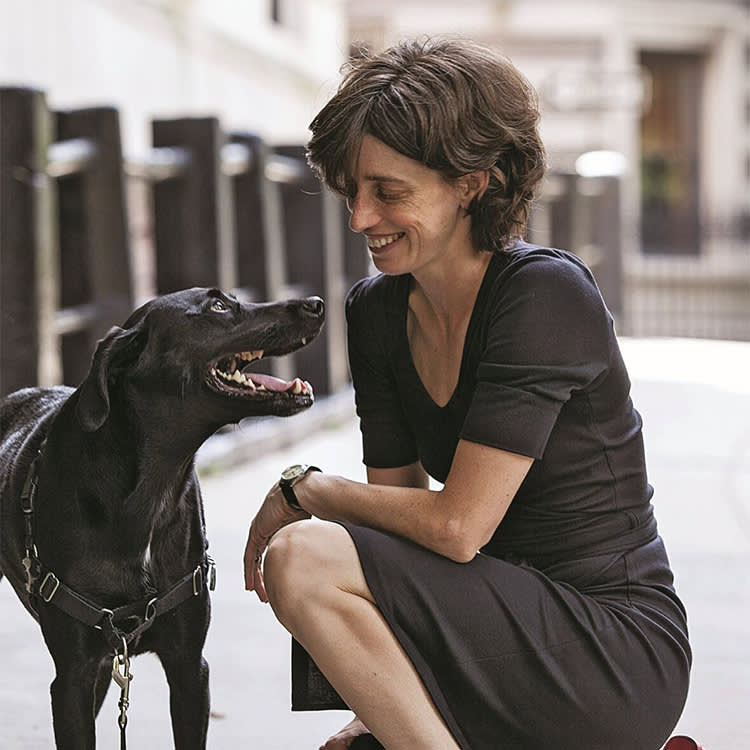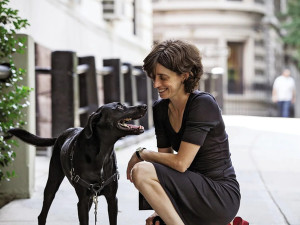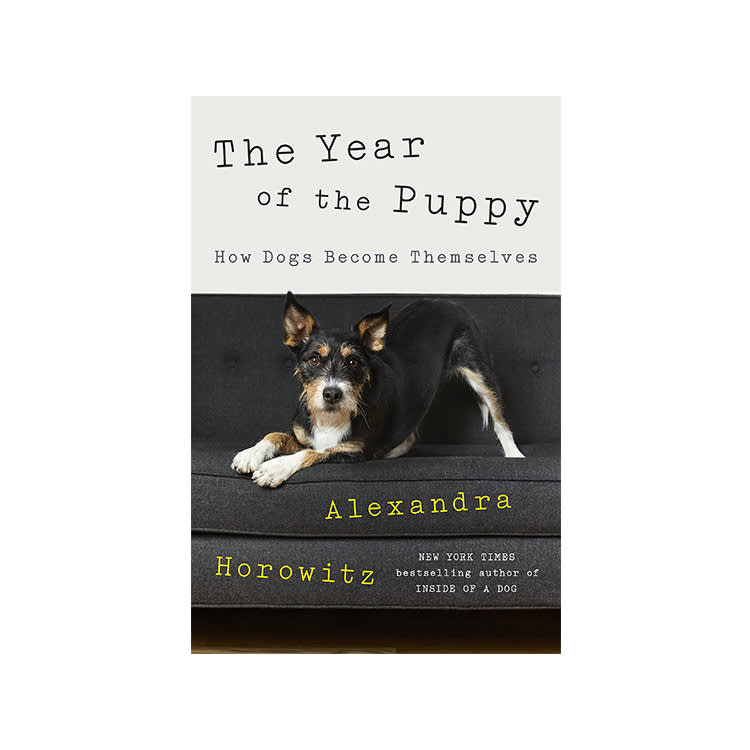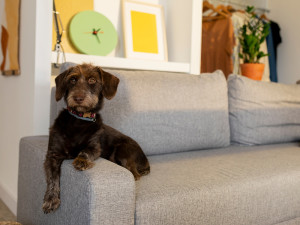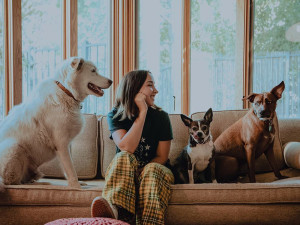Click “Add to Cart” on Alexandra Horowitz’s Puppy Development Book
In The Year of the Puppy: How Dogs Become Themselves, the dog cognition expert and New York Times best-selling author maps her puppy’s early development with empathy and insight.
In the field of canine science, Alexandra Horowitz, PhD, is nothing short of a legend. I first heard of her as a freshman at Barnard College, when my pet-obsessed friends told me there was a much-loved professor on campus who was famous for studying dog cognition. She and her students conduct their research in the Horowitz Dog Cognition Lab, a center where dogs are brought in for the day by their pet parents — not namelessly confined in cages long-term — to be observed with the goal of understanding how dogs perceive the world.
Horowitz’s findings have been detailed in the delightful books including the New York Times bestseller Inside of a Dog: What Dogs See, Smell, and Knowopens in new tab; Our Dogs, Ourselves:The Story of a Singular Bondopens in new tab; and Being a Dog: Following the Dog into a World of Smellopens in new tab — the latter two of which have companion young readers editions. Her new book, which was released this fall, The Year of the Puppy: How Dogs Become Themselvesopens in new tab, documents the growth of Horowitz’s pandemic puppy, Quiddity (Quid), during her first year of life.
Part memoir, part science report, The Year of the Puppy is an empathetic and informative look into what our dogs go through early in their development. Kinship talked to Horowitz about adopting Quid and what she hopes readers will take away from her new book.
Tell me about your pets. What are their names? How’d you end up taking care of them?
We live with Edsel, a Calico cat in middle age who would like to sit on your lap, and Quiddity, who is a young adult dog now. We adopted Edsel from a local NYC man who fosters street cats; she was about one. After ensuring that she was OK with dogs (we were living with two large dogs at the time) — and they with her — she came to live with us.
How much do you spend on your pet per year?
Quiddity I met right after she was born; her mom was a stray, and she was being fostered by a woman upstate. I met the foster when I was looking for litters to follow from birth for my book.
What was it like adopting Quid during the pandemic?
As many people who adopted dogs during the pandemic experienced, they were a life-giving force. At a time when we were hugely uncertain about the future, they were a steady distraction, entertainment, and manageable concern right at our feet.
What was your experience of the early pandemic like together?
For young dogs, the inability to interact with other dogs, with other people, and to go new places, was a real problem: They need a lot of early socialization so that they don’t develop fears, anxiety, or aggressive behavior to new situations and people and other animals. We spent a lot of time concertedly taking her out to experience new things of all sorts, within the constraints of the pandemic.
What motivated the new book?
While I have lived with many dogs in my life, studied dog cognition for two decades, and have written several books about dogs, I had never known a dog from her first days through adulthood. Like most people who adopt dogs, I’d always begun knowing dogs several months or years into their lives, and I was naturally curious about what happened to them in those early, formative days.
So, for this book I wanted to follow a puppy — who we would adopt — from day one, observing her grow, and also discuss the science of early dog development in parallel.
What do you hope people take away from The Year of the Puppy: How Dogs Become Themselves?
I think it’s helpful to appreciate how quickly dogs develop, and yet that “puppyhood” isn’t just one stage. They go through many stages in their first year, including adolescence, which can explain some of their behaviors. I also hope people feel able to be patient with their dogs’ sometimes slow learning curve [before they master] “how to be a dog in your family.”
Dogs are extremely attentive to us, good readers of our behavior, and naturally flexible in their behavior, but it still takes a while to understand how to live in a human household. Sometimes we think they should just “be trained” and instantly “get it.” That’s not how it works.
Why do you think it’s important to better understand dogs?
For me, it is important because dogs are an essential part of my life. I want to know who they are, what needs they have, and what I can do to make their lives better. Dogs do so much for us; I think we owe them the respect of considering who they are.
